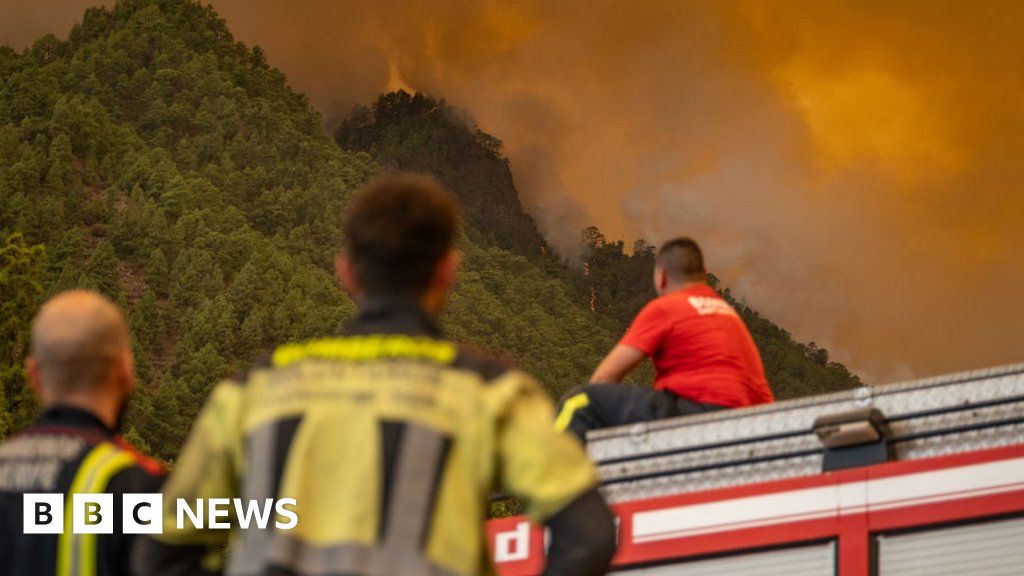The Spanish island of Tenerife is confronting a crazy wildfire rages through its mountainous terrain, threatening both natural landscapes and populated areas. The fierce blaze, which started on Wednesday, August 16th, has quickly extended, provoking widespread evacuations and challenging firefighting efforts.
The serious heatwave that recently swept the Canary Islands, coupled with specific meteorological conditions, has created a perfect storm for this devastating blaze.

Also Read: China: 21 Killed, 6 Missing After Mudslide in Xi’an
Sources about Wildfires Around the World 2023 (For R&D)
- List of wildfires
- Facts, Statistics: Wildfires
- List of current fires
- Maui Wildfires: At Least 53 Dead and Hundreds Missing
- Wildfire Forces 16,000 People Evacuate in Halifax, Canada
- Devastating Mediterranean Wildfires Kill More than 40
- Portugal Wildfire Rages for the 4th Day, 1,400 People Evacuated
The wildfire’s initial outbreak occurred inside a mountainous national park on Tenerife, one of the Canary Islands situated off the northwest coast of Africa.
By Thursday, the fire had extended essentially, covering around 4,500 acres of land (roughly 1,800 hectares) of land. The flames have made an almost 30-kilometer (19-mile) perimeter, making it an unprecedented challenge for firefighting teams to gain control.
Around 7,600 individuals have been impacted by the wildfire, either through evacuations or being confined to their homes because of unsafe air quality.
The impacted region includes six municipalities, with residents facing not only the immediate danger of the fire itself but also the difficulty of navigating the rugged terrain. The main town of Santa Cruz, situated about 20 kilometers away from the fire, remains at risk as the blaze continues to spread.
Firefighters and Spanish military staff are working tirelessly to contain the wildfire, yet their efforts have been hampered by the fire’s unpredictable behavior and the challenging landscape.
Also Read: Himachal Pradesh: Over 50 Dead Due to Heavy Rainfall
The terrain’s ruggedness makes access to the heart of the blaze incredibly difficult. To combat the fire, around 250 firefighters are utilizing 14 aircraft, including seaplanes deployed from mainland Spain. Despite their heroic efforts, the fire remains “out of control,” according to regional authorities.
The Canary Islands encountered an extreme heatwave just before the outbreak of the wildfire. With temperatures taking off over 40 degrees Celsius (104 degrees Fahrenheit),the islands’ already arid conditions were exacerbated, creating a highly flammable environment.
The combination of scorching temperatures, dry vegetation, and specific meteorological factors has contributed to the rapid and unpredictable spread of the wildfire.
Sadly, Tenerife’s wildfire is only one among numerous that Spain has been wrestling with this mid year. Wildfires have burned nearly 64,000 hectares (158,000 acres) across the country in the first seven months of the year.
Also Read: Fifth Force of Nature Discovered by Fermilab’s Scientists
This disturbing figure places Spain among the nations generally impacted by wildfires in Europe. In 2022, Spain accounted for almost 40% of the total land burned within the European Union, underscoring the severity of the situation.
The effect of wildfires goes beyond the immediate destruction of land and property. They threaten ecosystems, destroy habitats, and can have long-term consequences for biodiversity.
Besides, the evacuations of residents and the strain on emergency services create additional challenges for affected communities.
These disasters highlight the urgent need for proactive measures to mitigate the risk of wildfires and address the underlying factors driving their frequency and intensity.
Also Read: Nepal: At Least 38 Killed, Several Missing in Floods And Landslides


/cloudfront-us-east-2.images.arcpublishing.com/reuters/W3RVJWGDWJL4HKISAW4XURYDPI.jpg)





















